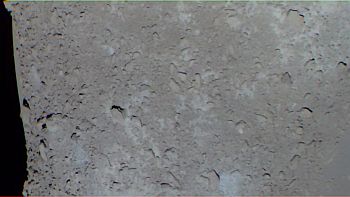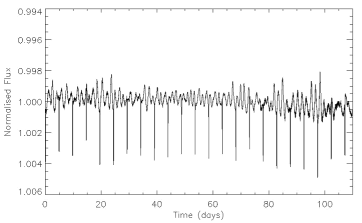http://www.space.com/scienceastronomy/071220-asteroid-mars.htmlSpeaking of 2007 WD5, the orbit is weakly constrained because the observations extend to only 29 days. The object was discovered on November 20th after it passed Earth some 4.5 million miles away on November 2th. It's currently only magnitude 22 and fading, and the moon is getting brighter in the same part of the sky, so there will be no observations for at least a week. In fact, the moon will be two moon diameters away from 2007 WD5 on Saturday evening, if you'd like an idea of where the minor planet is now in the sky. Mars is unmistakable at opposition in the East in the constellation Gemini in the evening. At time of possible impact, Mars will be in the horns of Taurus.
Usually these sorts of things tend to clear up after just a few more observations constrain the orbit better. Since it's so faint, a number of the observatories doing this sort of work (and a lot of them are amateurs doing it for free) won't be able to see it.
http://neo.jpl.nasa.gov/news/news151.htmlA good press release, with the error ellipse, which you can see is very, very long.
Play with this java orbit visualizer:
http://ssd.jpl.nasa.gov/sbdb.cgi?sstr=2007%20WD5&orb=1My old-fashioned planetarium program has a miss by quite a distance, but I wouldn't really be shocked at that.
Anyways, go out and see the
Moon and Mars close together on Sunday night. It'll be beautiful. In the right place on Earth, the Moon will occult it.
P.S. This wouldn't be the first impact seen on Mars. The
Mars Global Surveyor found 20 new craters over the course of it's mission.





